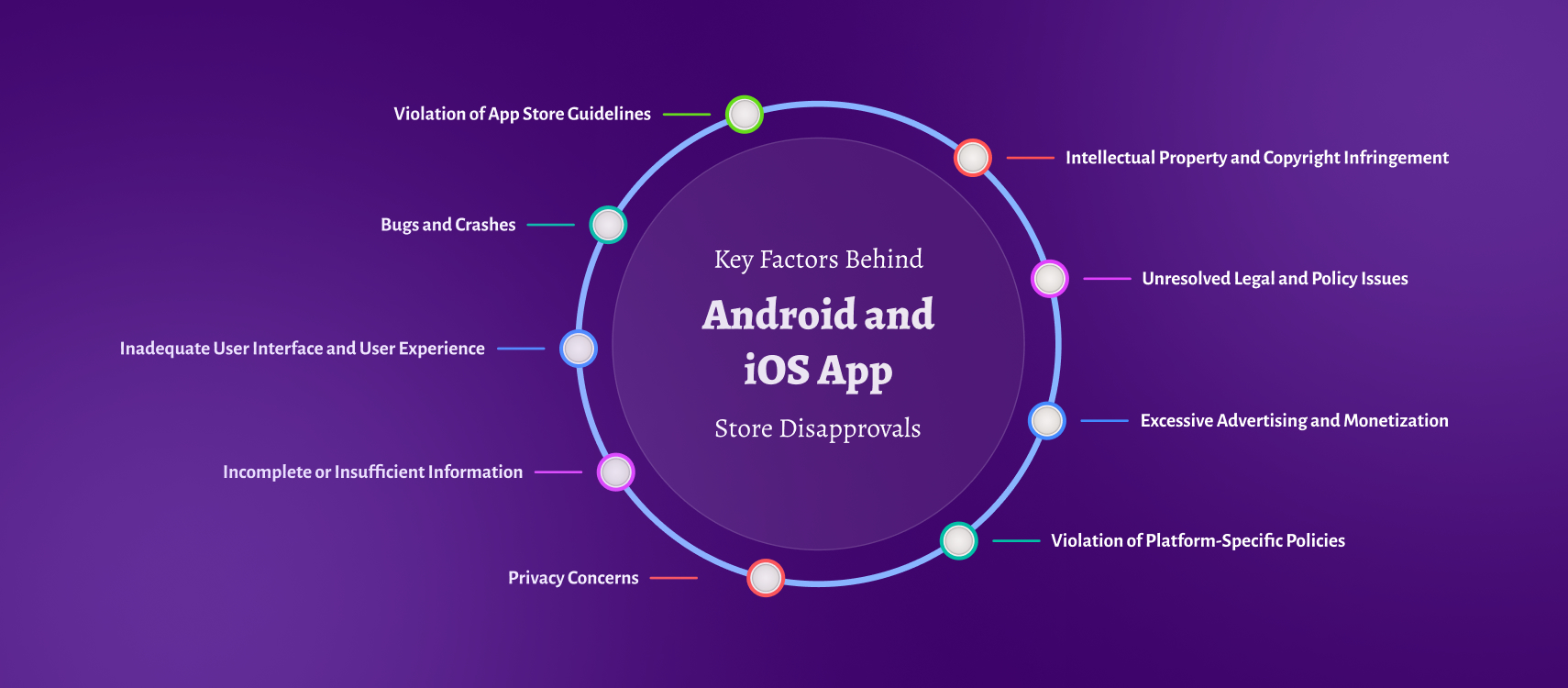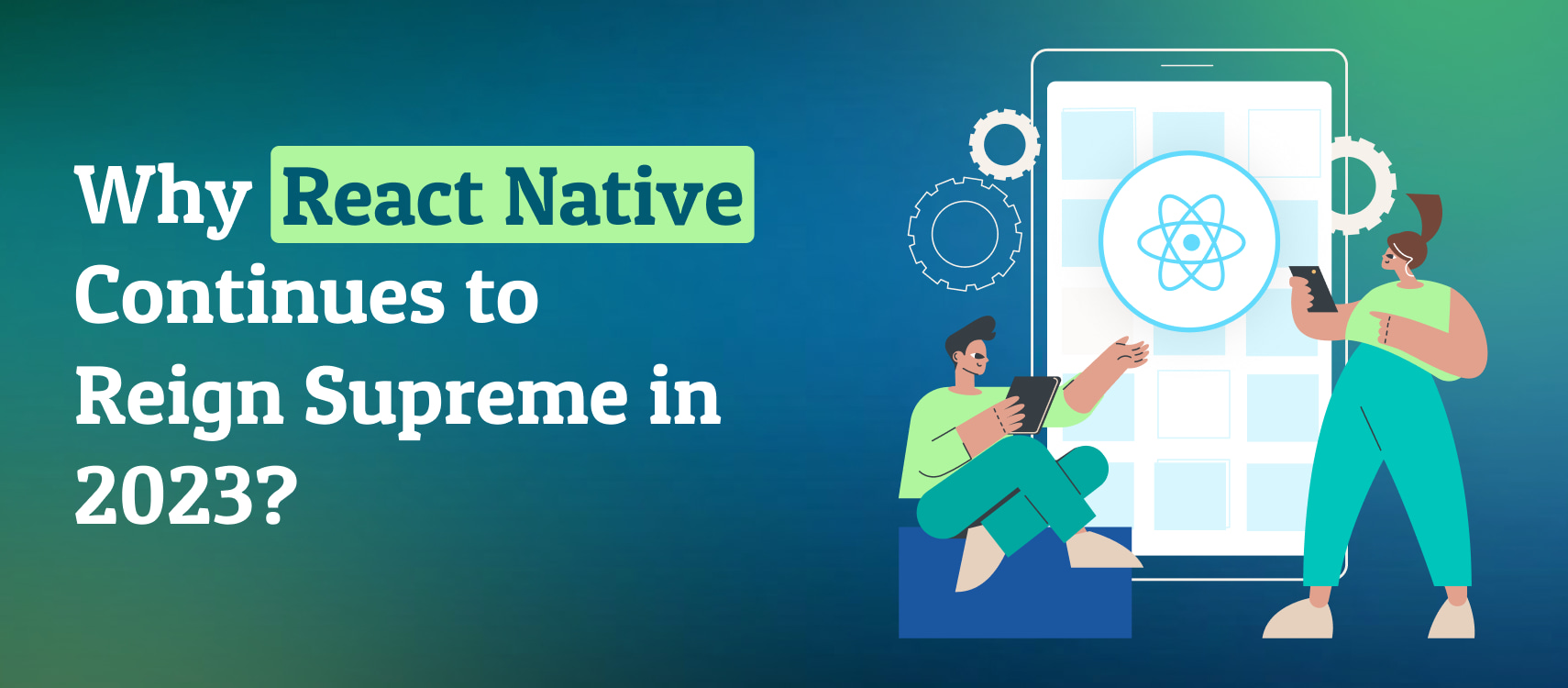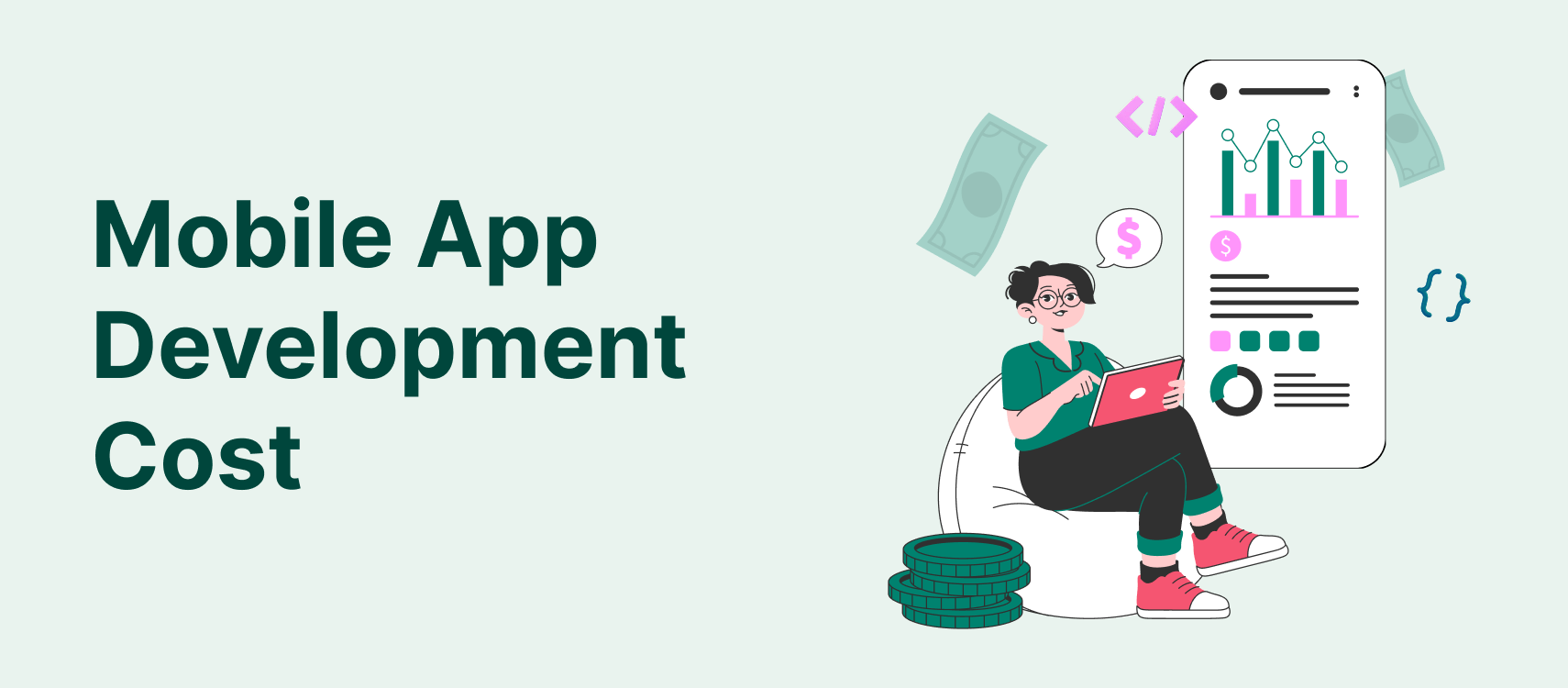Table of Contents
- Violation of App Store Guidelines
- Bugs and Crashes
- Poor UI/UX
- Insufficient Information
- Privacy Concerns
- IP and copyright infringement
- Unresolved Legal and Policy Issues
- Excessive Advertising and Monetization
- Violation of Platform-Specific Policies
- Ending Notes
The Apple App Store and Google Play Store are the two major platforms that distribute mobile applications to billions of users worldwide. These platforms maintain strict guidelines to ensure the quality, security, and user experience of the apps available for download. Consequently, many Android and iOS apps face the possibility of rejection during the submission process.
In this blog post, we will go deeper into the reasons behind app rejections, examining the detailed and elaborate aspects that developers need to consider when preparing their apps for submission.
Violation of App Store Guidelines
One of the primary reasons for app rejection is a violation of the App Store’s guidelines. Both Apple and Google have established extensive sets of rules and regulations that developers must adhere to. These guidelines cover a wide range of topics, including content, design, functionality, and security.
Developers must carefully review these guidelines and ensure their apps comply with them. Common violations include submitting apps that contain inappropriate or offensive content, fail to provide adequate privacy policies, or use deceptive practices to manipulate users. Ignoring these guidelines can lead to swift rejection.
Bugs and Crashes
Another common reason for app rejection is the presence of bugs and crashes. App stores strive to maintain a high-quality user experience, and apps that crash or malfunction frequently undermine that goal. Therefore, it is crucial for developers to thoroughly test their apps on various devices and operating system versions to identify and rectify any issues before submission.
While minor bugs may not necessarily result in rejection, apps with critical flaws or consistent crashes are likely to face rejection. Both Apple and Google have automated testing tools that evaluate app stability and performance, and apps failing these tests are likely to be denied entry.
Inadequate User Interface and User Experience
An app’s user interface (UI) and user experience (UX) play a significant role in its success. Apps with confusing or poorly designed interfaces can frustrate users and lead to negative reviews and low ratings. To maintain a high standard of user experience, both app stores have guidelines related to design, navigation, and functionality.
Developers should pay close attention to these guidelines to ensure their apps provide a seamless and intuitive experience. Common UI/UX issues that can lead to rejection include inconsistent design elements, unintuitive navigation, and poor accessibility for users with disabilities.
Incomplete or Insufficient Information
Incomplete or insufficient information in the app’s metadata and listing can lead to rejection. When users browse the app stores, they rely on the provided information to make informed decisions about downloading an app. Apple and Google require developers to provide accurate and detailed descriptions, screenshots, and app previews to showcase the app’s features and functionality.
Moreover, developers must accurately categorize their apps to ensure they appear in the appropriate sections of the app stores. Misleading or inaccurate metadata can lead to rejection, as it can misguide users and affect the discoverability of the app.
Read More: A Comprehensive Comparison of iOS vs Android App Development
Privacy Concerns
Privacy is a top priority for both Apple and Google. In recent years, there has been increased scrutiny and regulatory focus on data privacy, leading app stores to strengthen their privacy requirements. Apps that fail to protect user data or request excessive permissions without valid reasons are at risk of rejection.
To avoid privacy-related rejection, developers should follow best practices for data collection and usage, implement robust security measures, and provide clear and concise privacy policies. Both app stores now require developers to disclose their data collection and usage practices, making it essential for apps to be transparent about their data-handling practices.
Intellectual Property and Copyright Infringement
Intellectual property (IP) and copyright infringement are serious issues in the app development world. Developers must ensure that their apps do not violate the intellectual property rights of others. This includes avoiding the use of copyrighted images, music, or text without proper authorization.
Apps that infringe on IP rights, whether intentionally or unintentionally, can face legal action and immediate removal from app stores. To prevent this, developers should thoroughly review their app’s content and secure the necessary permissions or licenses for any copyrighted material they use.
Unresolved Legal and Policy Issues
Apps involved in legal disputes or that violate laws or regulations can be rejected or removed from the app stores. Developers must ensure that their apps comply with local, national, and international laws. For instance, apps related to gambling may be subject to specific regulations in different regions, and failure to comply with these regulations can lead to rejection.
Additionally, apps that encourage or facilitate illegal activities, such as drug use or hacking, are strictly prohibited. Developers should conduct thorough research and consult legal experts if they have any concerns about the legality of their app’s content or functionality.
Excessive Advertising and Monetization
While advertising and monetization are common strategies for app developers, excessive or intrusive ads can lead to app rejection. Both Apple and Google have guidelines regarding the placement and frequency of ads within apps. Apps that bombard users with ads, interfere with their ability to use the app, or deceive users with misleading advertising may face rejection.
Developers should strike a balance between monetization and user experience. This involves choosing ad formats that are non-intrusive, respecting user preferences for ad tracking, and clearly disclosing any in-app purchases or subscription fees.
Violation of Platform-Specific Policies
In addition to their general guidelines, Apple and Google have platform-specific policies that developers must adhere to. For example, Apple has strict policies regarding in-app purchases and subscription models. Apps that do not comply with these policies may be rejected.
Google, on the other hand, has specific policies related to apps distributed on Android devices, such as the requirement to use the Google Play billing system for in-app purchases in most cases. Developers should be aware of these platform-specific policies and ensure their apps align with them to avoid rejection.
Ending Notes
Submitting an app to the Apple App Store or Google Play Store is a critical step in the app development process. To ensure a smooth submission and minimize the risk of rejection, developers must meticulously review and address the various factors that can lead to rejection. Ultimately, the goal is to deliver high-quality, secure, and user-friendly apps that enhance the mobile experience for users around the world.










